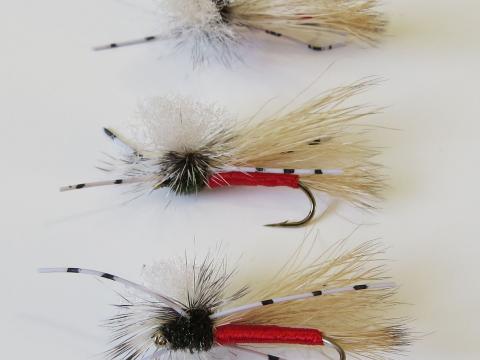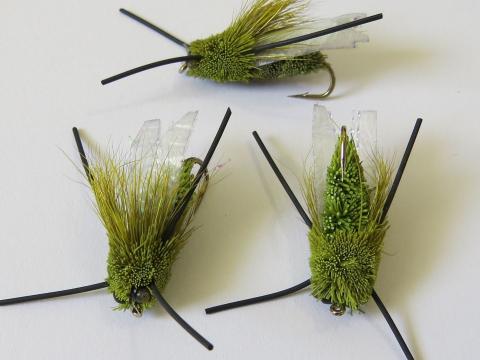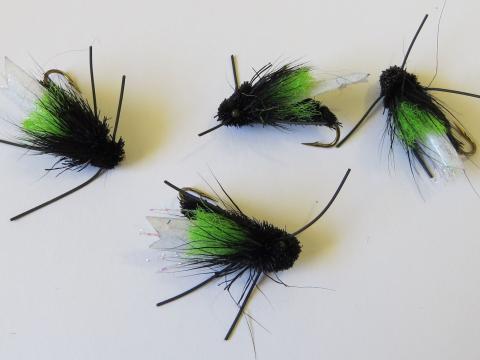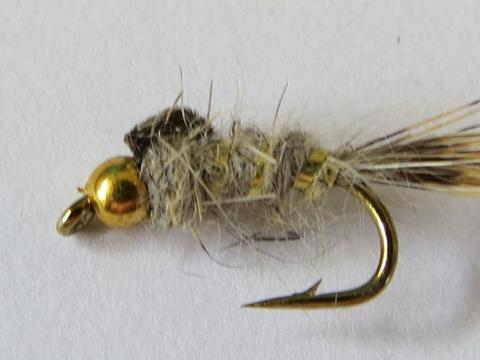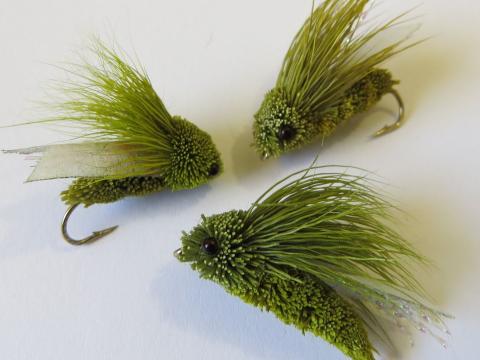Today Steve and I floated a stretch of the Rangitaiki River. Me, Blair and Jack floated it by raft a week or so ago. It was relatively quiet, even with a spinner. So I described to Steve that we would be using some new patterns and might need to put nymphs below our dry flies to get more action. So I tied on a new terrestrial pattern, Chubby Chernobyl. It is a beast of a thing and definitely a mutant. I told him we would tie a nymph below after we got through the rapids. He would just flick around as we negotiated the rocks and standing waves.
I have never seen that before! As soon as we hit the white water, he had four takes in four casts. He fought and landed a perfect specimen rainbow for the chilly bin. I suggested he fish his way back up the edge but wearing crocs, it was not an option. It is a difficult edge to negotiate on foot and serious footwear is required. Studded boots would be useful on the slippery rocks.
So we decided there was no need for a dropper below the dry. The next fly was a deer hair cicada olive with rubber legs in a size 4. This is a big fly and you have to wait even longer before striking with this one. He put his rod down to help me through a rapid then I noticed he had missed an eye with his fly line, again! Have a look at the short video for a reference.
We had a few misses and it took a while for the next solid hook up. Then Steve landed a nice brown. As we held onto some willow branches, Steve noticed a couple of spiders falling into the canoe and the water. So I tied on our Fishing Spider pattern. It would have caught a trout but Steve lost it in a tree, doh!
Then I tied on a Parachute Madam X dry fly and for the first time, tied on a bead head hare's ear nymph size 12 as a dropper. We pulled in and got out to blindly target the edge of a rapid. Steve insisted I take his rod, so I did. I got a nice rainbow on the dropper. You will notice the head of the rapid in the video. That is exactly the water I like to target with heavy nymphs. I think these days they call it Czech or Euro nymphing. I thought about it for a moment then could not be bothered setting my rod up. Besides, we had a lot of dry fly water to cover. Off came the hare's ear and on went a bead head prince nymph size 16.
Then we see a brown sitting very shallow right on the bank. Steve caught it on the Madam X as we floated by. The dropper was not required. As we were landing it, one of the bolts broke in my seat. Steve managed to tie it back up with the anchor rope.
The next pattern was a Black Deer Hair Cicada With Rubber Legs. It took Steve about one minute before he was hooked up again.
Then Steve decided it was my turn after several missed opportunities. He was not reacting quick enough when the nymph was being taken. It is hard work training yourself not to strike quickly when they eat the dry slowly. Then you need to strike quickly when they take the nymph below.
I put on a cicada and casted for ages before hooking up on what I thought was a fish, then it turned into a stick, then turned back into a nice rainbow. I was looking the other way when Steve told me to strike. Then the tippet broke at a wind knot. Steve made the wind knot of course. Then I missed a couple more, lost one after hookup, then completely failed on a sighted trout.
Just before we pulled out, we saw a rise. I dropped the cicada at least a metre off target but he swam over and took it anyway. What a great way to finish another awesome day on the river!
The forecast for the day was sun, cloud and showers. It did not disappoint. I must note, as always, if it showers or gets cloudy, then there is a sunny break, watch what happens on the water.



